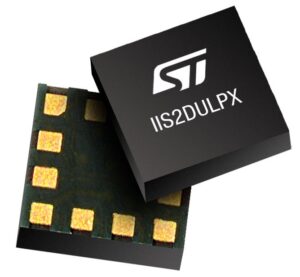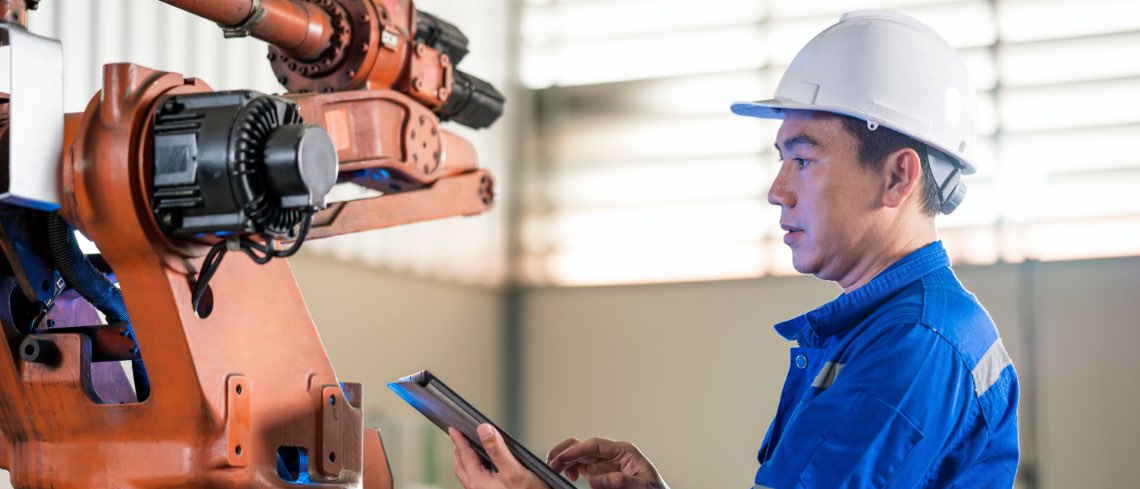The ISM6HG256X and IIS2DULPX are unique industrial smart sensors. The ISM6HG256X is the first on the market to reach 105 ºC while also including a gyroscope, low-g and high-g accelerometers, a sensor-fusion low-power IP, and a machine-learning core in a compact package. Similarly, the IIS2DULPX is a smart industrial ultra-low-power accelerometer that offers a ±16 g range, with a finite-state machine and a machine-learning core that supports adaptive self-configuration.
Early adoption has been extremely positive, and we already have design-ins and design-wins with customers working on asset-tracking, anti-tampering, worker personal protective equipment, condition monitoring, robots, and manufacturing automation, among many others. Additionally, we are featuring the ISM6HG256X during one of the Tech Dives at our upcoming STM32 Summit, which will take place from November 18 to November 20.
What limits sensors’ adoption today
The 4 typical challenges

In a paper co-authored by academics from universities in the United States, Ireland, and Nigeria, and published in the HAFED POLY Journal of Science Management and Technology in 20241, we see the common challenges engineers face when using sensors in embedded systems, such as “data accuracy, sensor calibration, energy efficiency, and security”. There are more issues that teams must address, but these few are those that come up most often and, as the paper shows, are at the heart of research today. Solving them is also one of the biggest drivers of innovation. For instance, by bringing machine learning technology to sensors like the LSM6DSOX more than six years ago, ST reshaped many applications available today.
The unique environmental issues in industrial settings
However, bringing these innovations to industrial applications presents unique challenges, starting with the fact that smart factories and other niche environments operate in harsh conditions. In many cases, sensors must operate at higher temperatures, experience significant vibrations, and endure greater mechanical stress. Consequently, inertial sensors and accelerometers designed for industrial applications evolve at a different pace than their consumer counterparts because stability, robustness, and ruggedness are higher priorities than simply adding features. It’s why most competing inertial sensors or accelerometers on the market today for high-temperature applications often have a limited set of functionalities.
The struggle between precision and power consumption
Another issue is maintaining data accuracy in harsh environments characterized by high temperature variation, vibration, and mechanical stresses without increasing the current consumption. Moreover, precision cannot come at the expense of excessive power consumption, as many applications are migrating to battery-operated or require low-power systems.
Why the ISM6HG256X and IIS2DULPX set new limits
Improved precision

The little-known fact behind ST’s new devices, the ISM6HG256X and IIS2DULPX, is that they were made possible, in part, by significantly improving the calibration step during manufacturing. Put simply, by improving our technologies and testing methodologies, we increased their precision while supporting the high temperatures required by industrial applications. Concretely, it means that the ISM6HG256X can leverage the mechanical design architecture of the LSM6DSV320X introduced earlier this year to also offer a high-g accelerometer capable of detecting up to ±256 g, on top of the ±16 g available on the low-g channel, thus significantly increasing the scale of measurement on competing IMU devices.
Smarter machine learning
Similarly, both the ISM6HG256X and the IIS2DULPX feature a finite-state machine and a machine-learning core, thus enabling the creation of AI applications that can run on the sensor. In a nutshell, it means detecting events and performing inference operations inside the sensor without waking the host microcontroller, thereby significantly improving overall energy efficiency. And while ST has provided such capabilities in previous industrial inertial sensors, including the ISM330DHCX and IIS2ICLX, it’s the first time we are bringing our optimized IPs with adaptive self-configuration (ASC) to industrial applications. It keeps power consumption low while guaranteeing sensing accuracy by enabling the device to adapt instantly to different conditions, without missing any events or movement.
Higher efficiency
As is now evident, the increase in accuracy and processing also comes with an important reduction in power consumption. Despite all its new features, the IIS2DULPX only requires 9.3 µA in high-performance mode and 3 µA in ultra-low power mode, with a sample rate of 1.6 Hz. That’s less than the previous generation, despite offering an ASC unit and the smart functionalities together. Similarly, the ISM6HG256X consumes only 0.8 mA when both accelerometers and its gyroscope are enabled. Hence, the ISM6HG256X and IIS2DULPX are highly symbolic because, as researchers and makers seek sensors that can process data more efficiently, effectively, and accurately, the new devices from ST make great strides in all four domains.
- Sathyamoorthy, Sruthi & Matthew, Ugochukwu & Adekunle, Temitope & Okafor, Nwamaka. (2024). Advances and Challenges in IoT Sensors Data Handling and Processing in Environmental Monitoring Networks. HAFED POLY Journal of Science, Management and Technology. 5. 40–60. https://doi.org/10.4314/hpjsmt.v5i2.3. ↩︎
